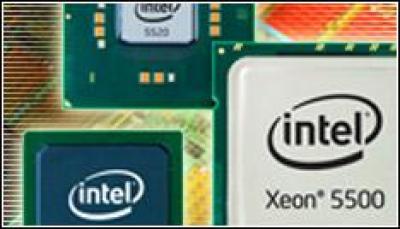Intel Maps Its Greener Micro-Server Roadmap

Intel is preparing its launch into the nascent low-power micro-server market using Xeon and Atom chips
Intel officials are looking to use a combination of low-power “Sandy Bridge” Xeon chips and Atom processors to build out their portfolio of products for ultra-dense micro servers.
Executives with the giant chip maker first talked about micro servers in 2009, describing high-performance, energy-efficient systems that share resources and target such environments as large data centres and service providers, where density and low costs are important.
A Bout Of ARM Wrestling
 For Intel, offering processors for such systems is increasingly important as the company looks to address an emerging challenge from ARM Holdings and partners that use its designs to create low-power chips. ARM-based chips from the likes of Qualcomm and Samsung dominate such high-demand markets as smartphones and tablets, and now ARM officials are looking to expand into the data centre in such arenas as cloud computing and Web hosting.
For Intel, offering processors for such systems is increasingly important as the company looks to address an emerging challenge from ARM Holdings and partners that use its designs to create low-power chips. ARM-based chips from the likes of Qualcomm and Samsung dominate such high-demand markets as smartphones and tablets, and now ARM officials are looking to expand into the data centre in such arenas as cloud computing and Web hosting.
Vendors such as Marvell, Nvidia and Calxeda are working to build ARM-based processors that can be used in such systems.
During a press conference March 15, Boyd Davis, general manager of Intel’s Data Centre Group, said such low-power servers can eventually account for as much as 10 percent of the systems market, and that Intel over the next two years will offer a range of Xeon and Atom processors to meet that demand.
“We’re very excited about micro servers for very, very specific workloads,” Davis said, calling the cloud servers space “the sweet spot” for such systems. “The key for us… is to have technologies to address the market needs of that 10 percent.”
Intel already has the 45-watt quad-core Xeon E3-1260L and the 20-watt dual-core E3-1220L – both based on the new Sandy Bridge micro architecture and both built for single-socket systems – in production and that will be released in the next few weeks, according to Davis. Another unnamed Xeon chip, a 15-watt version for dual-socket servers, will be released in the second half of the year.
In 2012, Intel will release three more Xeon chips, as well as an Atom processor that will have a power envelope of under 10 watts.
In addition to the processors, Intel in the second quarter will unveil its new Micro Server Evaluation Lab, where developers will be able to run their software on Intel-based micro server systems – running both Xeon and Atom chips – to determine how to best optimise offerings to the servers.
Other Players Entering The Arena
Davis pointed to a number of systems makers already looking to create such Intel-based micro servers, pointing to Dell’s DCS 5120 and Tyan’s FM65-B5511 systems. In addition, start-up Seamicro in February unveiled its upcoming second-generation Atom-based SM10000-64 system.
During the press conference, Davis said social-networking giant Facebook is an example of the type of environment that these micro servers can address. Gio Coglitore, director of Facebook Labs, said during the event that his company is looking to leverage micro servers as an alternative to virtualisation for front-end workloads.
Using the low-power and relatively inexpensive servers in what Coglitore called a “realised environment” would enable Facebook to more easily scale its workloads than it could through virtualisation. In addition, should a micro server fail, it would be easier and less costly to simply remove it and replace it with another micro server rather than having to deal with a more traditional and highly virtualised server that fails.
Such an environment would not work for back-end workloads, but Facebook is moving in that direction for the front-end tasks, Coglitore said.
“Facebook is on a very rapid compute cycle of two or three years,” he said. “So it isn’t necessarily that you can’t virtualise, but a realised environment is the right approach for us, across our whole infrastructure.”
Environments like the one Facebook runs are becoming an increasingly attractive area for chip makers. ARM CEO Warren East in December 2010 said his company will challenge Intel’s server-chip dominance by 2014, relying on the performance and power efficiency inherent in the company’s designs for chips for mobile devices. Already ARM is planning designs that bring in features needed for data centre chips, including support for virtualisation.